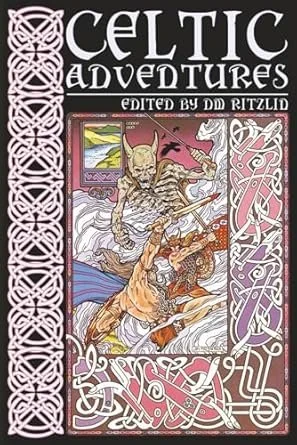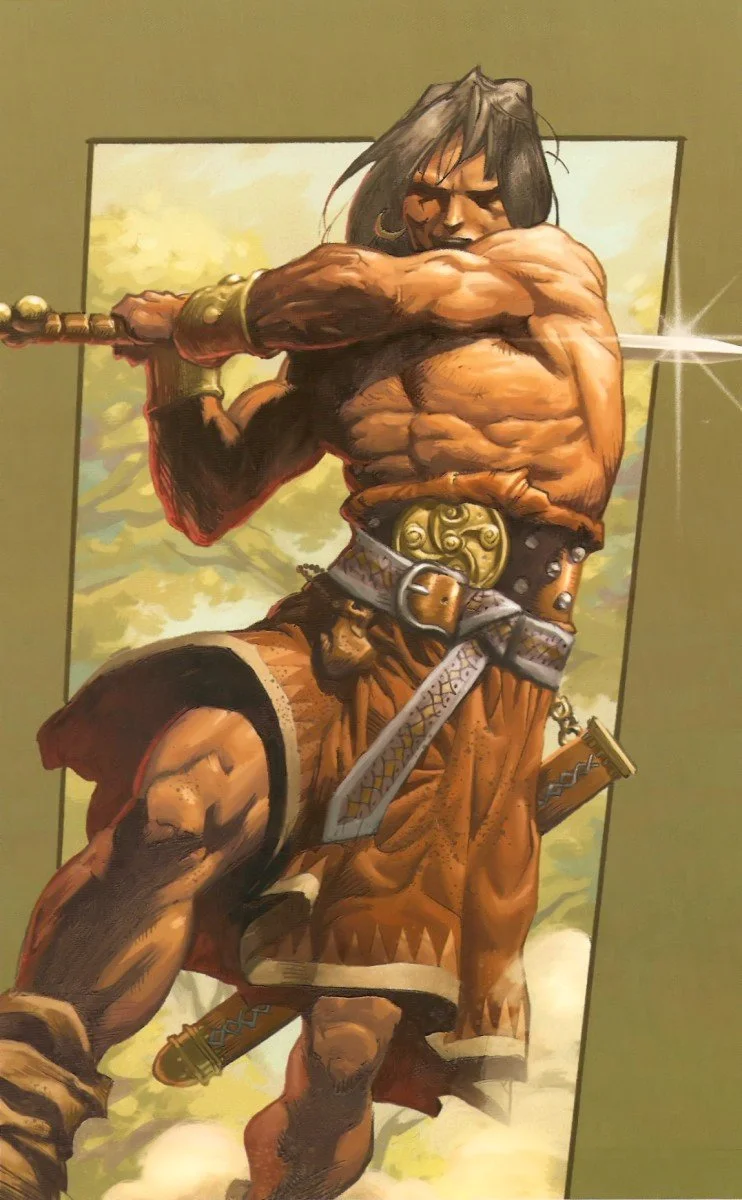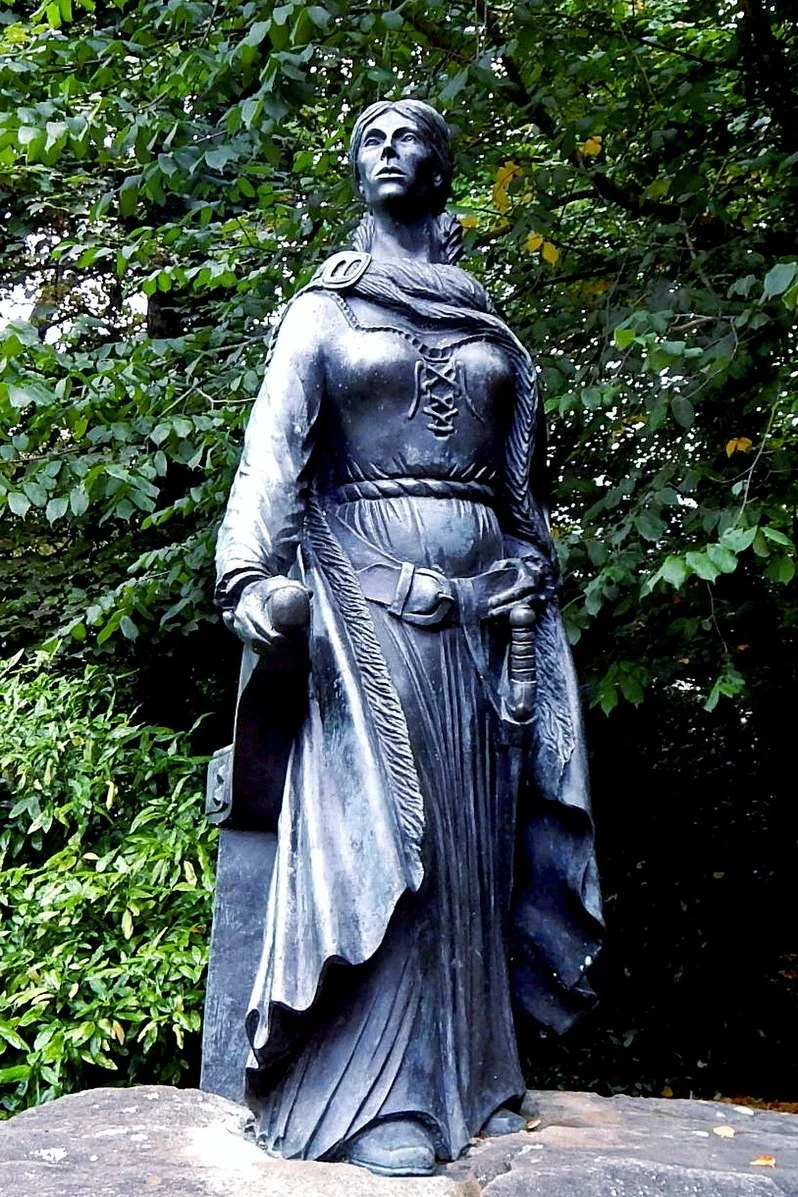Brian Murphy Reviews DMR Books' Celtic Adventures
Brian Murphy is a man who should be known to most Sword and Sorcery fans. He was one of the cyber-scribes chosen by Steve Tompkins to carry the torch at the Cimmerian blog. His own blog, The Silver Key, has been a bastion for swords and sorceries for over fifteen years. His book examining the history of S&S, Flame and Crimson, has won well-earned accolades. So, I was more than glad to see him reviewing DMR Books’ Celtic Adventures over at The Silver Key.
Brian split his review into halves. Let's look at the first, which can be read in its entirety here.
So, here are some excerpts, along with my commentary.
'DMR’s Celtic Adventures has been a good read so far. I’m a poem and a few stories in, having finished the poem “The Druids” by Kenneth Morris, “The Devil’s Dagger” by Farnham Bishop and Arthur Gilchrist Brodeur, and Fiona MacLeod’s “The Harping of Cravetheen” … plus a long overdue re-read of Howard’s story ["People of the Dark"]. (...)
It’s been reprinted a few times since, including in DMR Books’ new anthology, which collects six old-school short stories and two poems (all published between 1895-1948) about swashbuckling tales of adventure and magic set in old Ireland.'
I certainly appreciate Brian's kind words, but I have some quibbles. Celtic Adventures is definitely more than an anthology "about swashbuckling tales of adventure and magic set in old Ireland". The term 'Celtic' encompasses more than Ireland, though Erin has long been considered the 'flagship' country for that term. Scotland, Wales and Brittany are all Celtic 'countries' where Celtic languages are still spoken. Celtic Adventures features "The Druids" by Kenneth Morris--a Welshman who spoke Cymraeg ("Welsh")--which is one example of DMR Books' intention to include non-Irish works in Celtic Adventures. “The Devil’s Dagger” by Farnham Bishop and Arthur Gilchrist Brodeur, “A Claymore for the Clan” by Donald Barr Chidsey and “The Horror in the Glen” by Clyde Irvine are all about Gaelic Scotsmen doing Gaelic things in Scotland.
That said, Robert E. Howard is the crucial figure when it comes to 'Celtic adventure' fiction before World War II. More than any other author in the pulps--or outside--REH wrote tales of adventure about Celtic heroes. One would have to go back to James MacPherson and Sir Walter Scott to find anything comparable. However, all of that deserves a dedicated post.
"People of the Dark" appears to be set somewhere on the north-west coast of what is now England--definitely not Ireland. John O'Brien is a Texan of Irish heritage visiting that region. He goes to Dagon's Cave to kill his romantic rival, Richard Brent. He then falls and hits his head. Here's what Murphy says:
"The story takes a major twist when O’Brien falls down a flight of ancient stairs, strikes his head heavily on the stone floor, and awakes to find himself… Conan [of Eireann]. (...) Even more strange, O’Brien remembers being Conan [of Eireann], so has apparently awakened some ancestral memory."
Cary Nord’s rendition of a young Conan the Cimmerian. That said, it’s pretty close to a good depiction of Conan of Eireann, doing his reiving thing.
I should preface this by saying--as I've had to do for two decades, because it never seems to sink in--that 'Conan' is an ancient Gaelic name. Jim FitzPatrick's son is named Conann--partially due to Irish tradition and partially as an homage to REH. In fact, 'Conan' is a pan-Celtic name, with exact--or close--counterparts in Welsh, Cornish and Breton. If you had to name a hero to represent all Celts, 'Conan' would be in the top five, if not top three.
Brian refers to 'ancestral memory'. Robert E. Howard seems to have held to some degree of belief in this and also reincarnation. While I would never deny the influence of Jack London, Edgar Rice Burroughs and A. Merritt on those views, Howard also had a more ancient source for such beliefs. Diodorus Siculus and Julius Caesar--among several other Classical authors--described the Celtic belief in some sort of reincarnation. One also finds echoes of such in the Irish Táin Bó Cúailnge and the Welsh Mabinogion. It's quite possible something like that goes clear back to the tribes of the Indo-European steppes. Without a doubt, REH would have read some of those Classical authors--or summaries thereof.
Anyway, Brian goes on to take a litcrit dive into the story which I find quite interesting. I urge DMR readers to check it out.
On September 2, Mr. Murphy posted a second blog entry, which can be found here. This post concentrates on the other crown jewel of Celtic Adventures, “Grana, Queen of Battle,” by John Barnett. Here's what he had to say:
"I just closed the cover on DMR Books’ latest release, Celtic Adventures, and had to say a few words about the final entry collected therein: 'Grana, Queen of Battle,' by John Barnett.
Because it’s damned good.
Were it anthologized amid a dozen modern S&S/historical adventures it would not be out of place—except it would likely be the best story in the collection. And it was written in 1913 for The Cavalier. That’s pre-World War I for those keeping score at home, and yet it is in no way dated. In fact, it is burning with life in these pages.
Clearly this is the stuff from which sword-and-sorcery would be made. Short, episodic stories building on one another, action-packed, relatively small stakes (save to Grana herself of course)."
The statue in Connacht honoring Gráinne Ni Mháille, Pirate Queen of Ireland.
What he said. I've been stating the same ever since Dave Ritzlin sent me the basic text of Celtic Adventures. "Grana, Queen of Battle" is the real deal. At this point, props need to be given. Dave Ritzlin is one of the great editors out there. He is also a fine scholar of the pulps. That said, Morgan Holmes has been studying the pulps since the Eighties. He also has a special interest in 'Celtic' fiction. Holmes is the one who found Barnett's story. Possibly his greatest feat of 'pulp archaeology' so far.
Brian then had this to say:
"Grana O'Malley is a badass S&S style heroine. Per the introduction she was a real person, a formidable Irish pirate whom the English dubbed Grace O’Malley. She comes alive in these pages thanks to Barnett’s skill."
Robert E. Howard was a fan of Grace O'Malley. He dedicated "Sword Woman" to her and a few other 'woman-warriors'. She was Irish Gaelic, was raised speaking Irish Gaelic and fought against the Elizabethan English overlords of Ireland. Her name in Gaelic is Gráinne Ni Mháille. Anglicizations are 'Grana', 'Grania' and 'Grace'.
The other thing I'll say at this point is that Barnett's authorial 'voice' is definitely 'Irish'. Of course, we can read this in various actual Irish authors. However, I would argue that non-Irish authors like Gregory Frost and Keith Taylor have pulled it off. The same can be said of Robert E. Howard, to some extent. 'Barnett' is a Norman-Irish name. I have no idea whether John Barnett knew any Irish folk or that he visited Ireland. I can say that, having visited Ireland three times and growing up knowing an Irishman from Connacht, that Barnett nails the 'feel' of Irishness.
Gráinne Ni Mháille enforcing her maritime ‘toll’ off the coast of Connacht.
To wrap things up, I'll quote Murphy from his first post on Celtic Adventures:
"TL;DR, read Celtic Adventures for wild Irish adventure and more."




